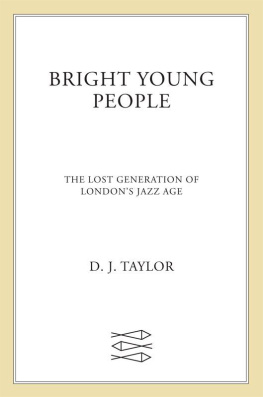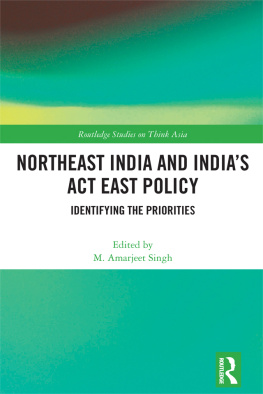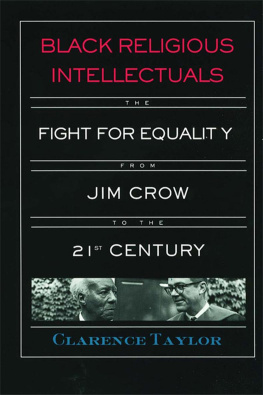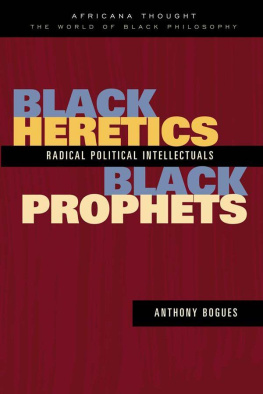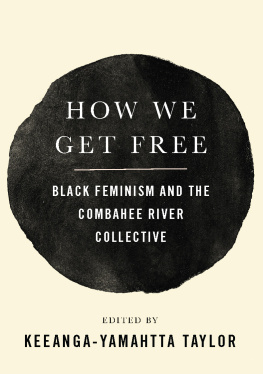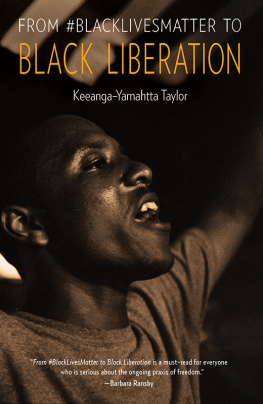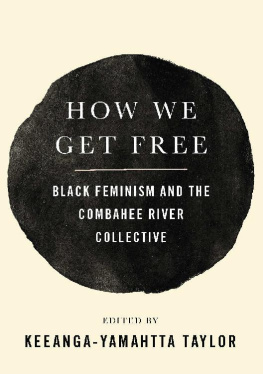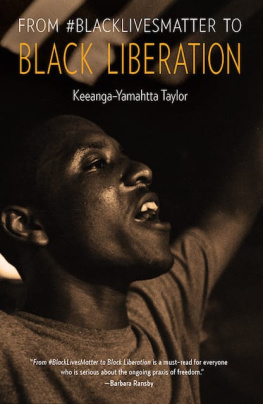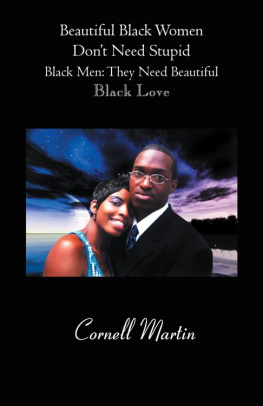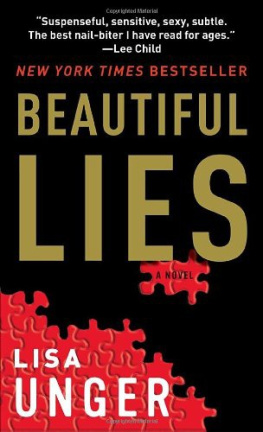Taylor - Black Is Beautiful
Here you can read online Taylor - Black Is Beautiful full text of the book (entire story) in english for free. Download pdf and epub, get meaning, cover and reviews about this ebook. year: 2016, publisher: John Wiley & Sons, Incorporated, genre: Politics. Description of the work, (preface) as well as reviews are available. Best literature library LitArk.com created for fans of good reading and offers a wide selection of genres:
Romance novel
Science fiction
Adventure
Detective
Science
History
Home and family
Prose
Art
Politics
Computer
Non-fiction
Religion
Business
Children
Humor
Choose a favorite category and find really read worthwhile books. Enjoy immersion in the world of imagination, feel the emotions of the characters or learn something new for yourself, make an fascinating discovery.

Black Is Beautiful: summary, description and annotation
We offer to read an annotation, description, summary or preface (depends on what the author of the book "Black Is Beautiful" wrote himself). If you haven't found the necessary information about the book — write in the comments, we will try to find it.
Black Is Beautiful — read online for free the complete book (whole text) full work
Below is the text of the book, divided by pages. System saving the place of the last page read, allows you to conveniently read the book "Black Is Beautiful" online for free, without having to search again every time where you left off. Put a bookmark, and you can go to the page where you finished reading at any time.
Font size:
Interval:
Bookmark:

- Chapter 02
- Chapter 04
- Chapter 06
Series Editor: Philip Alperson, Temple University
The Foundations of the Philosophy of the Arts series is designed to provide a comprehensive but flexible series of concise texts addressing fundamental general questions about art as well as questions about the several arts (literature, film, music, painting, etc.) and the various kinds and dimensions of artistic practice.
A consistent approach across the series provides a crisp, contemporary introduction to the main topics in each area of the arts, written in a clear and accessible style that provides a responsible, comprehensive, and informative account of the relevant issues, reflecting classic and recent work in the field. Books in the series are written by a truly distinguished roster of philosophers with international renown.
1. The Philosophy of ArtStephen Davies
2. The Philosophy of Motion PicturesNol Carroll
3. The Philosophy of LiteraturePeter Lamarque
4. Philosophy of the Performing ArtsDavid Davies
5. The Philosophy of Art, Second EditionStephen Davies
6. Black is Beautiful: A Philosophy of Black AestheticsPaul C. Taylor
Paul C. Taylor

This edition first published 2016
2016 Paul C. Taylor
Registered Office
John Wiley & Sons, Ltd, The Atrium, Southern Gate, Chichester, West Sussex, PO19 8SQ, UK
Editorial Offices
350 Main Street, Malden, MA 021485020, USA
9600 Garsington Road, Oxford, OX4 2DQ, UK
The Atrium, Southern Gate, Chichester, West Sussex, PO19 8SQ, UK
For details of our global editorial offices, for customer services, and for information about how to apply for permission to reuse the copyright material in this book please see our website at www.wiley.com/wiley-blackwell.
The right of Paul C. Taylor to be identified as the author of this work has been asserted in accordance with the UK Copyright, Designs and Patents Act 1988.
All rights reserved. No part of this publication may be reproduced, stored in a retrieval system, or transmitted, in any form or by any means, electronic, mechanical, photocopying, recording or otherwise, except as permitted by the UK Copyright, Designs and Patents Act 1988, without the prior permission of the publisher.
Wiley also publishes its books in a variety of electronic formats. Some content that appears in print may not be available in electronic books.
Designations used by companies to distinguish their products are often claimed as trademarks. All brand names and product names used in this book are trade names, service marks, trademarks or registered trademarks of their respective owners. The publisher is not associated with any product or vendor mentioned in this book.
Limit of Liability/Disclaimer of Warranty: While the publisher and author have used their best efforts in preparing this book, they make no representations or warranties with respect to the accuracy or completeness of the contents of this book and specifically disclaim any implied warranties of merchantability or fitness for a particular purpose. It is sold on the understanding that the publisher is not engaged in rendering professional services and neither the publisher nor the author shall be liable for damages arising herefrom. If professional advice or other expert assistance is required, the services of a competent professional should be sought.
Library of Congress Cataloging-in-Publication Data
Names: Taylor, Paul C. (Paul Christopher), 1967 author.
Title: Black is beautiful : a philosophy of black aesthetics / Paul C. Taylor.
Description: Hoboken : Wiley, 2016. | Series: Foundations of the philosophy of the arts | Includes index.
Identifiers: LCCN 2016002850 (print) | LCCN 2016005797 (ebook) | ISBN 9781405150620 (cloth) | ISBN 9781405150637 (pbk.) | ISBN 9781118328675 (pdf) | ISBN 9781118328699 (epub)
Subjects: LCSH: Aesthetics, Black. | African American aesthetics.
Classification: LCC BH301.B53 T39 2016 (print) | LCC BH301.B53 (ebook) | DDC 111/.8508996073dc23
LC record available at http://lccn.loc.gov/2016002850
A catalogue record for this book is available from the British Library.
Cover image: Seydou Keita, Untitled, 1952/1955. Gelatin silver print, printed later.
Courtesy CAAC The Pigozzi Collection, Keta/SKPEAC
I dont know where to begin (or, it turns out, to end) because nothing has been written here. Once the first book comes, then well know where to begin.
Barbara Smith, Toward a Black Feminist Criticism
I went into philosophy because I thought it would help me help others think more productively about black expressive culture. This seemed like an important thing to do during the early days of the US post-civil rights era, in those days after world events had undermined the idea that, as Du Bois might say, the walls of race were clear and straight, but before it had seriously occurred to anyone to toy with thoughts of post-racialism. At that moment, black expressive culture the aesthetic objects, performances, and traditions that defined blackness for many people as surely and as imperfectly as skin color or hair texture do still seemed important in the ways that the US Black Arts Movement had insisted it was. But the old reasons for assigning it this importance had lost some of their purchase, and the old contexts for creating, experiencing, and understanding black expression were undergoing rapid and radical transformation.
The old reasons for focusing on black literature, film, music, and the rest were artifacts of earlier regimes of racial formation. Prior to the (qualified) successes of the twentieth-century black freedom struggles, black expressive culture mattered to blacks because culture work allowed them to escape, to some degree, more than aspirants to success in business or politics could, the yoke of white supremacist exclusion, and to achieve at a level commensurate with their talents. So blacks could look to entertainers and artists as emblems or defenders of their human possibilities. Black culture workers could show self-doubting blacks as well as negrophobes of other races the true potential of unfettered black strivings, and they could defend the race against the racist images and narratives that dominated western culture. At the same time, black expressive culture also mattered to people of other races, even anti-black racists of other races, and also for a handful of reasons. For some, primitive blacks had their fingers on the pulse of some quintessentially human impulses that over-civilized people of other races had forgotten. For others, blackness could be a symbolic field for working out their own identities and impulses, consciously or unconsciously. For still others, and most simply, blackness was associated with dimensions of human experience that are always of wide interest it was exotic, titillating, dangerous, and sensual.
This dialectical struggle of colonial and anticolonial approaches to blackness began to lose its relevance after African countries became self-governing, and after black subject populations in settler colonial states began to assert and win something like their full citizenship rights. Put simply: Once Oprah becomes a global media icon, and Toni Morrison wins the Nobel Prize for literature, and Mandela becomes the president of South Africa, and Obama becomes the president of the United States perhaps better: now that Tim Story can direct summer blockbuster films like
Next pageFont size:
Interval:
Bookmark:
Similar books «Black Is Beautiful»
Look at similar books to Black Is Beautiful. We have selected literature similar in name and meaning in the hope of providing readers with more options to find new, interesting, not yet read works.
Discussion, reviews of the book Black Is Beautiful and just readers' own opinions. Leave your comments, write what you think about the work, its meaning or the main characters. Specify what exactly you liked and what you didn't like, and why you think so.



